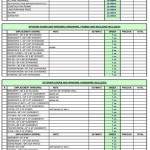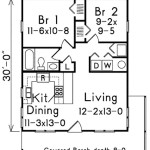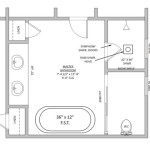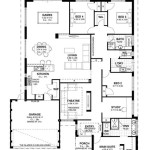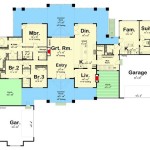Draw Your Own House Plans
Designing and building a home is a complex process that involves numerous steps, one of the most crucial being the creation of house plans. Traditionally, homeowners have relied on architects to draft these plans, but advancements in technology and the availability of user-friendly software have made it possible for individuals to draw their own house plans.
Whether you're an experienced designer or a first-time homeowner, drawing your own house plans offers several advantages:
- Cost-effective: Hiring an architect can be expensive, while software and online resources for drawing house plans are relatively affordable.
- Control and Customization: Drawing your own plans gives you complete control over the design, allowing you to tailor it to your specific tastes and requirements.
- Learning and Empowerment: The process of drawing house plans can be a rewarding learning experience, empowering you to understand the architectural principles and construction process.
If you're considering drawing your own house plans, here are some essential steps to follow:
1. Determine Your Needs and Requirements
Start by identifying your specific requirements for the house, including the number of bedrooms, bathrooms, living spaces, and any special features you desire. Consider your lifestyle, daily routines, and future plans. Sketch out a basic floor plan to visualize the layout and flow of the house.
2. Choose a Software or Online Resource
There are various software programs and online resources available for drawing house plans. Select one that is user-friendly and offers the features you need. Some popular options include AutoCAD, SketchUp, and Home Designer Pro.
3. Gather Information and Inspiration
Study architectural magazines, browse home design websites, and visit open houses to gather ideas and inspiration for your house plans. Pay attention to different design styles, room arrangements, and layout configurations.
4. Learn Basic Architectural Principles
Before you start drawing, familiarize yourself with basic architectural principles, such as scale, dimensions, and building codes. This will ensure that your plans are technically accurate and meet industry standards.
5. Start Sketching
Begin by sketching out the floor plan, using the dimensions and requirements you determined earlier. Draw the walls, doors, windows, and other structural elements. Experiment with different layouts and configurations until you find one that flows well and meets your needs.
6. Add Details
Once the floor plan is complete, start adding details such as electrical outlets, plumbing fixtures, cabinets, and appliances. Consider the placement of windows to maximize natural light and views.
7. Check for Accuracy
Throughout the drawing process, regularly check the accuracy of your plans. Use a scale to ensure that the dimensions are correct. Consult with building codes to ensure compliance with safety and construction regulations.
8. Get Feedback
Seek feedback from friends, family, or a professional builder to provide an objective perspective on your house plans. They may suggest improvements or identify potential issues that you might have overlooked.
Drawing your own house plans can be a challenging but rewarding experience. By following these steps and investing the necessary time and effort, you can create a home design that truly reflects your vision and meets your specific requirements.

Make Your Own Blueprint How To Draw Floor Plans

Make Your Own Blueprint How To Draw Floor Plans

Floor Plan Creator And Designer Free Easy App

Design Your Own Home House Designing Homes

Floor Plan Creator And Designer Free Easy App

Draw Floor Plans With The Roomsketcher App

Be Your Own Floorplanner How To Draw House Plans Drawing Building A

Draw Floor Plans With The Roomsketcher App

Make Your Own Floor Plans

House Plans And Design


